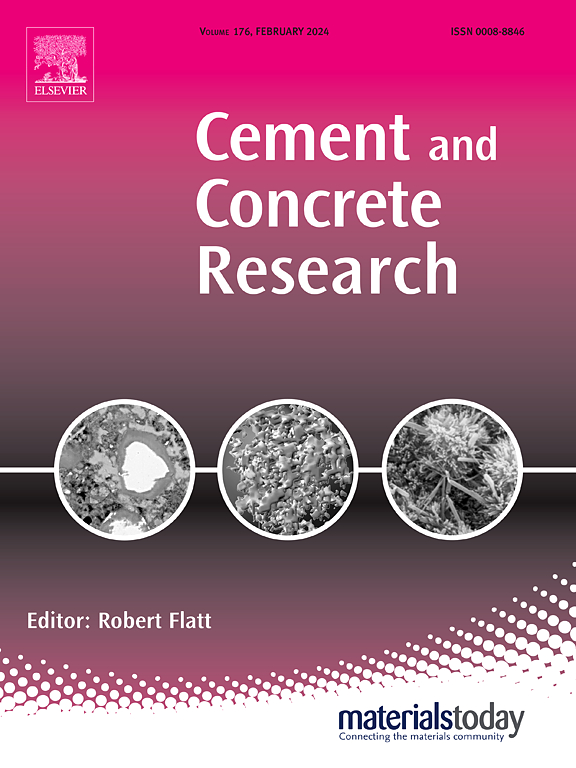Effect of Ca(OH)2 on the immobilization of simulated radioactive borate waste in metakaolin-based geopolymer waste forms
IF 13.1
1区 工程技术
Q1 CONSTRUCTION & BUILDING TECHNOLOGY
引用次数: 0
Abstract
Geopolymers are promising candidates for immobilizing radioactive borate waste (BW), but their performance needs improvement as borate negatively affects their physicochemical properties such as compressive strength and setting time. This study investigated the effect of Ca(OH)₂ on geopolymer waste forms by varying the Ca/Al ratio (0.25–1.0). At a Ca/Al ratio of 0.25, Ca(OH)₂ tripled the compressive strength (5 to 14 MPa) by promoting geopolymerization reaction and forming C-(A)-S-H gel. The increased pH and the reactive Ca ions led to the decomposition of immobilized BW. A low Ca/Al ratio caused minimal structural changes, while higher ratios promoted C-(A)-S-H gel formation. Characterization results confirmed the formation of extensive geopolymers and a compact microstructure. Notably, in the geopolymer waste form with a Ca/Al ratio of 0.25, the cumulative fraction leached of B decreased by more than twofold and the leachability index increased from 7.5 to 8.7, compared to the Ca-free geopolymer waste form. This research provides insights into the role of calcium in immobilizing radioactive BW in geopolymers, emphasizing the importance of optimizing the Ca/Al ratio to enhance immobilization performance.


Ca(OH)2对偏高岭土聚合物废物形态中模拟放射性硼酸盐废物固定化的影响
地聚合物是固定化放射性硼酸废物(BW)的理想材料,但其性能有待改进,因为硼酸对其抗压强度和凝固时间等理化性能有负面影响。本研究通过改变Ca/Al比值(0.25-1.0)考察了Ca(OH) 2对地聚合物废弃物形态的影响。在Ca/Al比为0.25时,Ca(OH) 2通过促进地聚合反应形成C-(a) - s - h凝胶,使抗压强度增加了3倍(5 ~ 14 MPa)。pH和活性钙离子的增加导致固定化生物质的分解。低Ca/Al比导致的结构变化很小,而高Ca/Al比促进了C-(A)- s - h凝胶的形成。表征结果证实形成了广泛的地聚合物和致密的微观结构。值得注意的是,在Ca/Al比为0.25的地聚合物废物形态中,与不含Ca的地聚合物废物形态相比,B的累积浸出分数减少了2倍以上,可浸性指数从7.5提高到8.7。本研究深入探讨了钙在地聚合物中固定放射性BW中的作用,强调了优化Ca/Al比以提高固定性能的重要性。
本文章由计算机程序翻译,如有差异,请以英文原文为准。
求助全文
约1分钟内获得全文
求助全文
来源期刊

Cement and Concrete Research
工程技术-材料科学:综合
CiteScore
20.90
自引率
12.30%
发文量
318
审稿时长
53 days
期刊介绍:
Cement and Concrete Research is dedicated to publishing top-notch research on the materials science and engineering of cement, cement composites, mortars, concrete, and related materials incorporating cement or other mineral binders. The journal prioritizes reporting significant findings in research on the properties and performance of cementitious materials. It also covers novel experimental techniques, the latest analytical and modeling methods, examination and diagnosis of actual cement and concrete structures, and the exploration of potential improvements in materials.
 求助内容:
求助内容: 应助结果提醒方式:
应助结果提醒方式:


